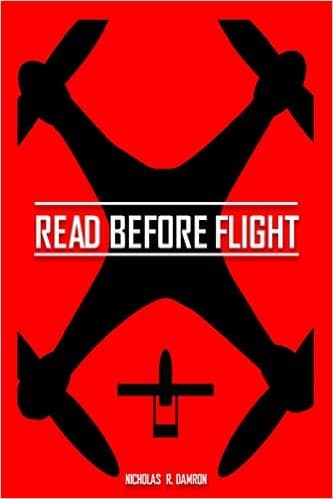Army Drone Operator Writes Book on Industry Standards

Nicholas Damron fell in love with aviation as soon as he was exposed to it in the Army. But instead of being drawn to aircraft you get in to fly, Damron’s passion landed with unmanned systems instead. Now an Army-qualified operator for Unmanned Aircraft Systems (UAS) and with over nine years of flight training and operational experience to include combat UAS operations, Damron is sharing his experience in “Read Before Flight,” a new book to help those looking to get into drones safely. He is also a student at Embry-Riddle Aeronautical University – Worldwide.
First, what is your background in UAS? What drew you to this technology? What is the fascination there?
I am an Army-qualified Standardization Instructor Operator (SO) for UAS. As an SO, I have built and managed UAS training programs for different Army elements. I have flown UAS as an active duty and National Guard soldier, a defense contractor and as a private enthusiast. Over the course of my UAS career, I have acquired extensive experience building and managing UAS training and operational programs that support programs of instruction, technical manuals and other relevant documentation.

Damron's "Read Before Flight"
What was the inspiration for “Read Before Flight”?
I have studied the commercial market intently now for several years and found heavy emphasis on drone/UAS regulation but felt that industry standardization was being missed.
“Read Before Flight” is a guide to advise readers how to build safe and standardized drone/UAS flight training and operation programs. It is a compilation of lessons learned and military experience that can be applied to the growing commercial market. The principles outlined in the book are scalable and apply to individuals operating a single quad copter as well as large companies flying multiple unmanned systems.
Drones have been used in the military space for quite some time, what do you see are the main differences in standards and restrictions between the military and commercial / hobby users?
I believe that the commercial market has much to learn from military UAS operations. The military has worked extensively, across branches, to collectively discover minimum qualification standards and training requirements. This was not done in a bubble. There was, and continues to be, heavy influence from the aviation community – which includes the Federal Aviation Administration.
I strongly believe that the commercial market will begin to mirror many of these standards where it makes sense. By that, I do not mean that DJI Phantom Operators should and will be required to have an extensive aircrew training program and qualification process. But I do think that beyond line of sight systems will adopt similar principles.
Drone regulation is a hot topic these days. What would you like to see or not see included in any uniform regulations?
Loaded question! But I will say this. The job of the Federal Aviation Administration (FAA) is to create regulation that supports safe operation of aviation systems in the national airspace. I hope and pray that as they do this they consider unmanned operations from the user perspective and seriously look at how the military has regulated safe use of unmanned systems.
That being said, commercial drones are quite different than the group two or larger unmanned systems that the military operates. The smaller aircraft must be treated and regulated differently than larger beyond line of sight systems. I believe the FAA has figured this out and that rules and regulations for beyond line of sight are still a few years out. One other important thing to note is that the FAA does not create or monitor industry standards. These must be established by the community, and this is the heartbeat of “Read Before Flight.”
I know you’re an enthusiast as well, what do you like to fly?
I flew beyond line of sight fixed wing UAS for the military but in my spare time I love to fly quad copters. I have several mini and micro quads that I’ve learned on. I even purchased a “Real Flight” simulator and am a big fan of training through simulation. I also own a DJI Phantom II Vision Plus and am getting into aerial cinematography. I must say though, what really excites me is First Person View (FPV) racing. I plan to build my first FPV racer soon and begin to tackle the challenge of mastering FPV flight. There is something about the speed and complexity that absolutely captivates me!
